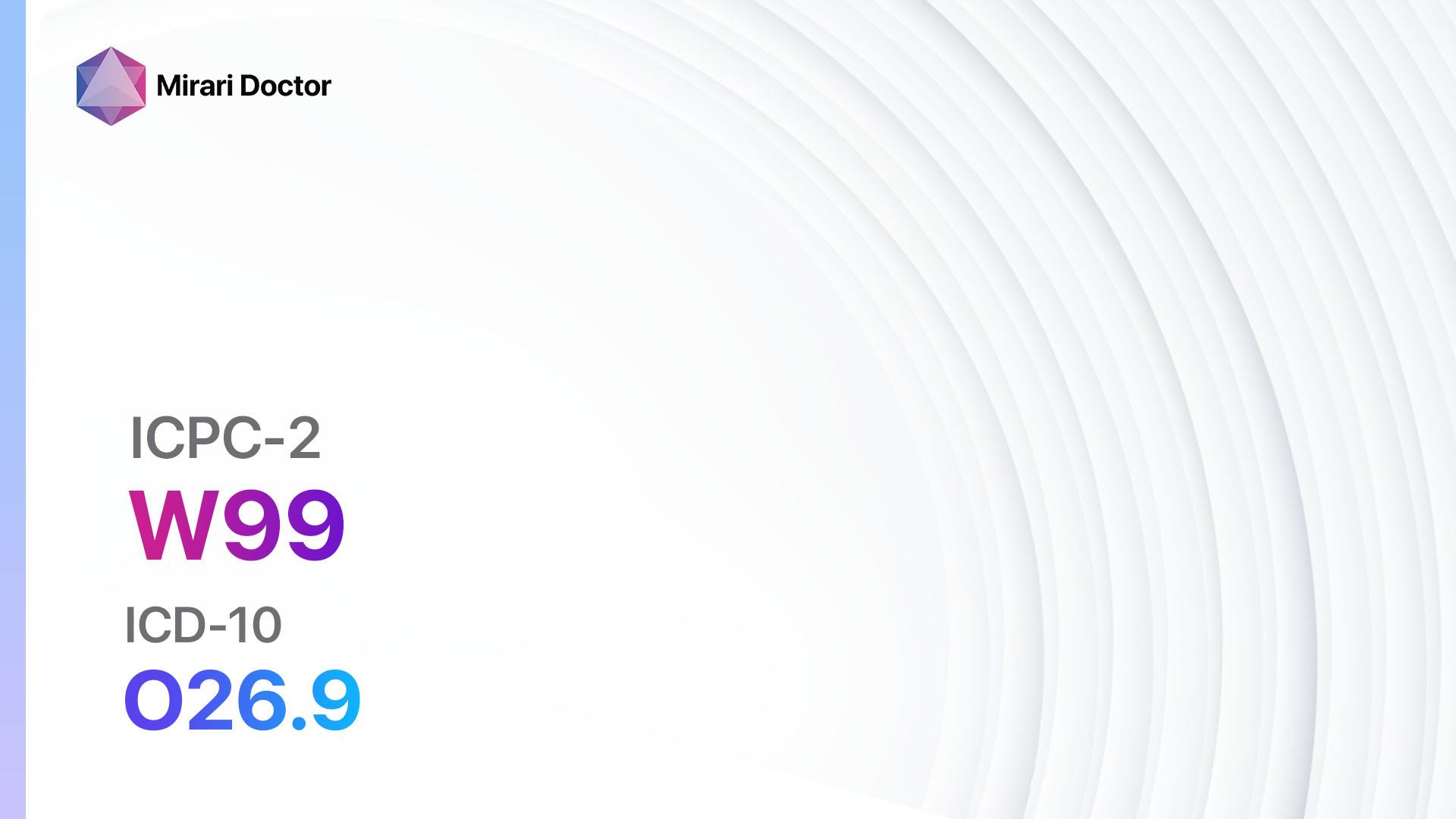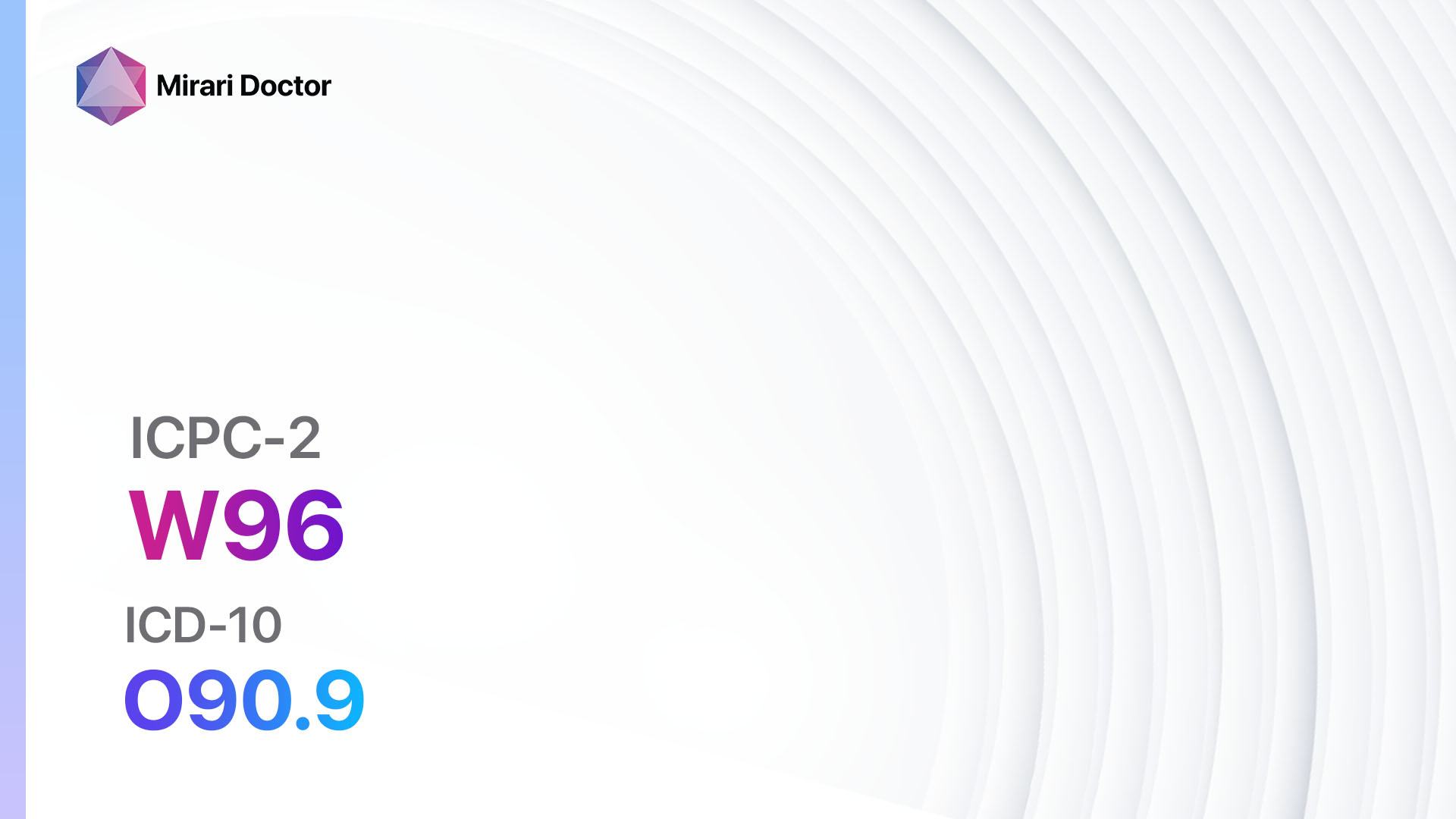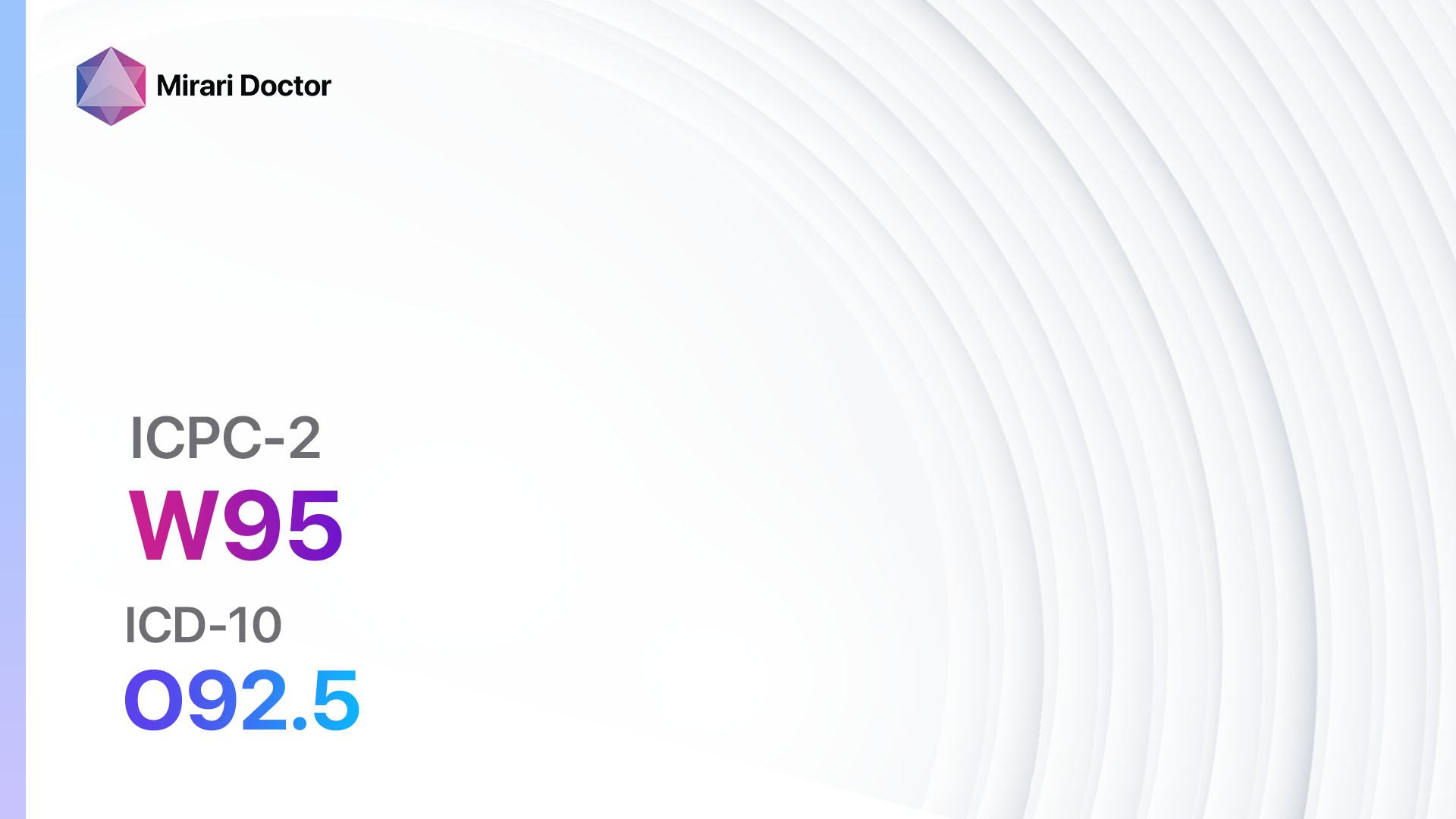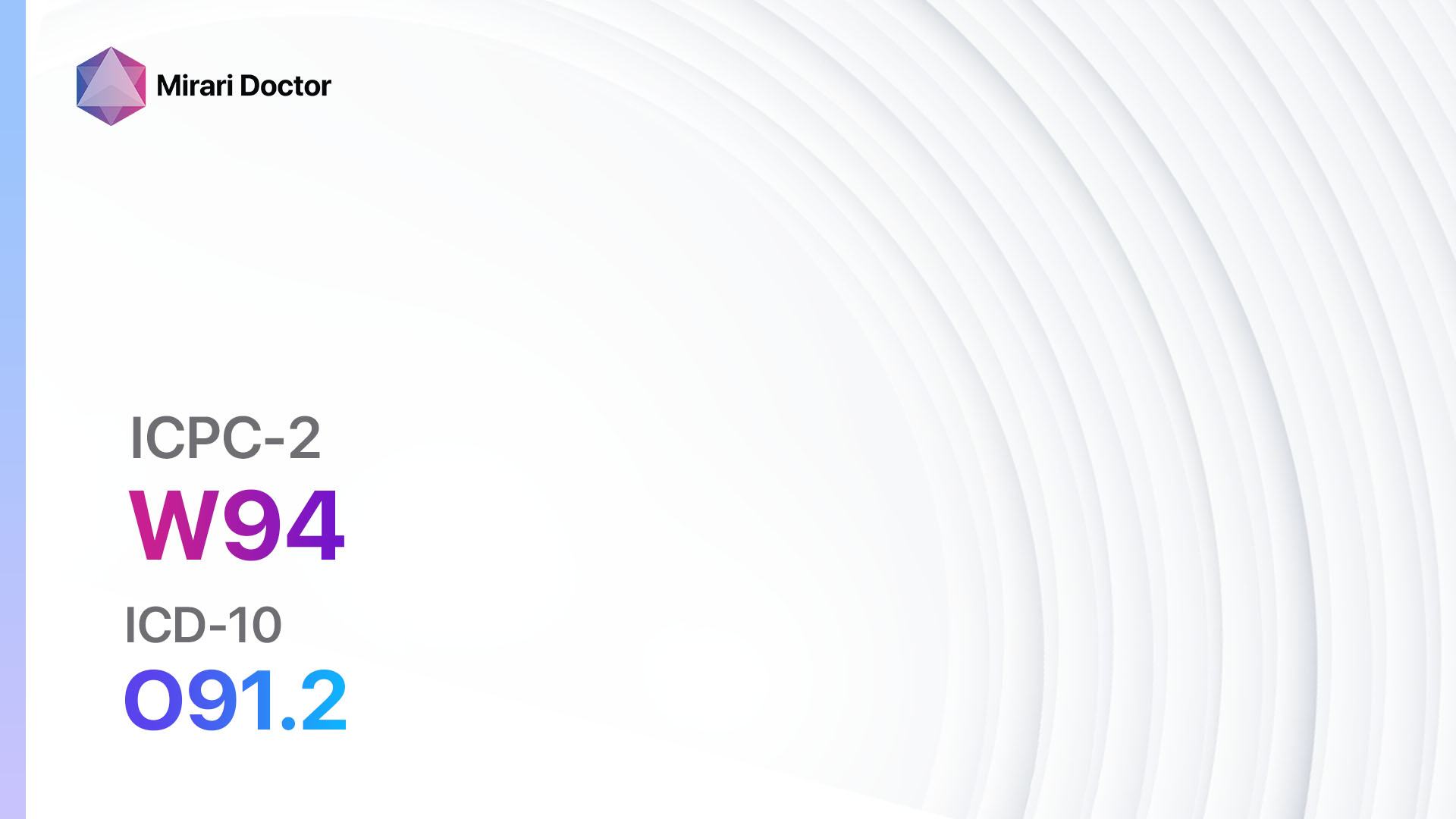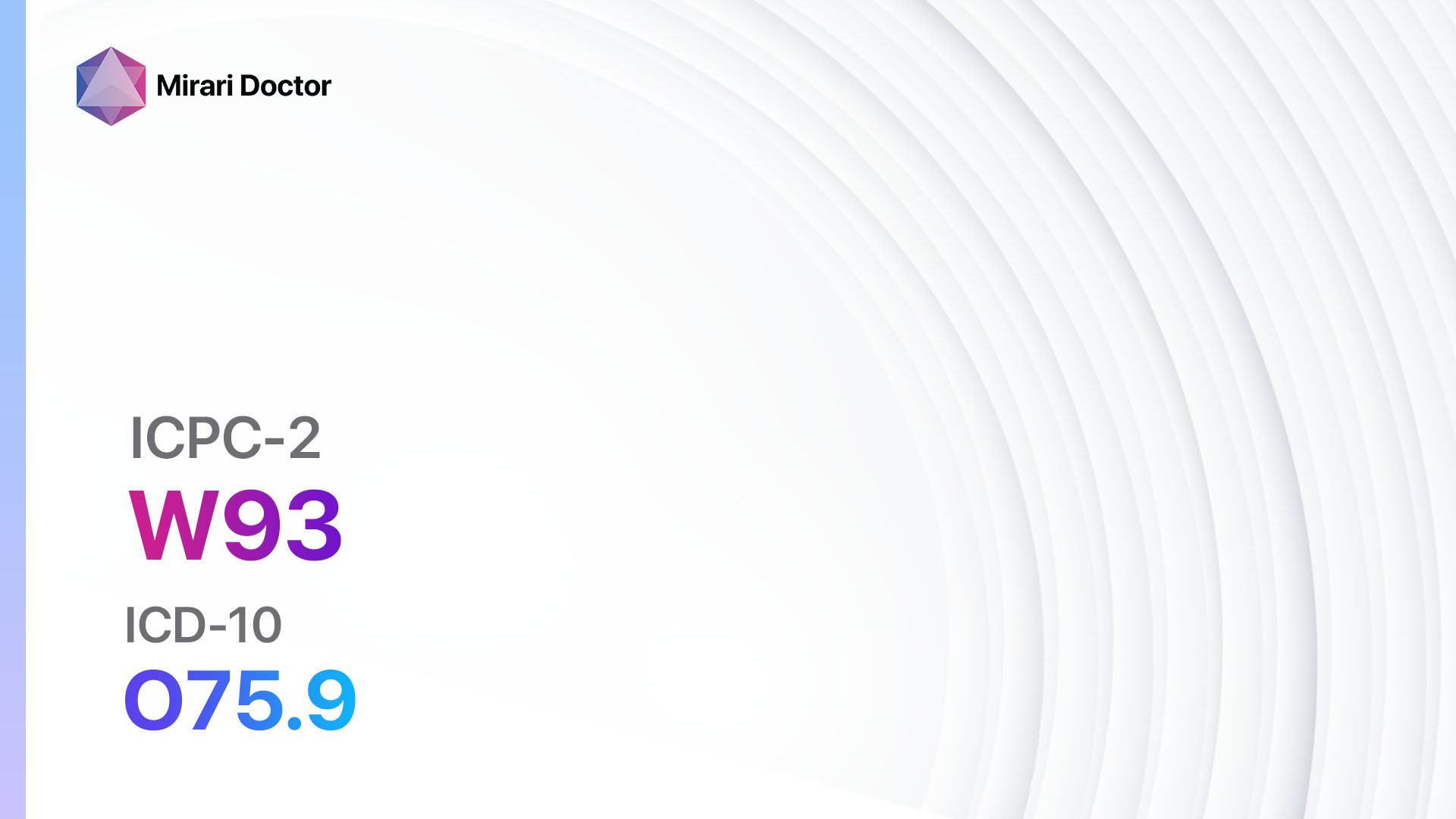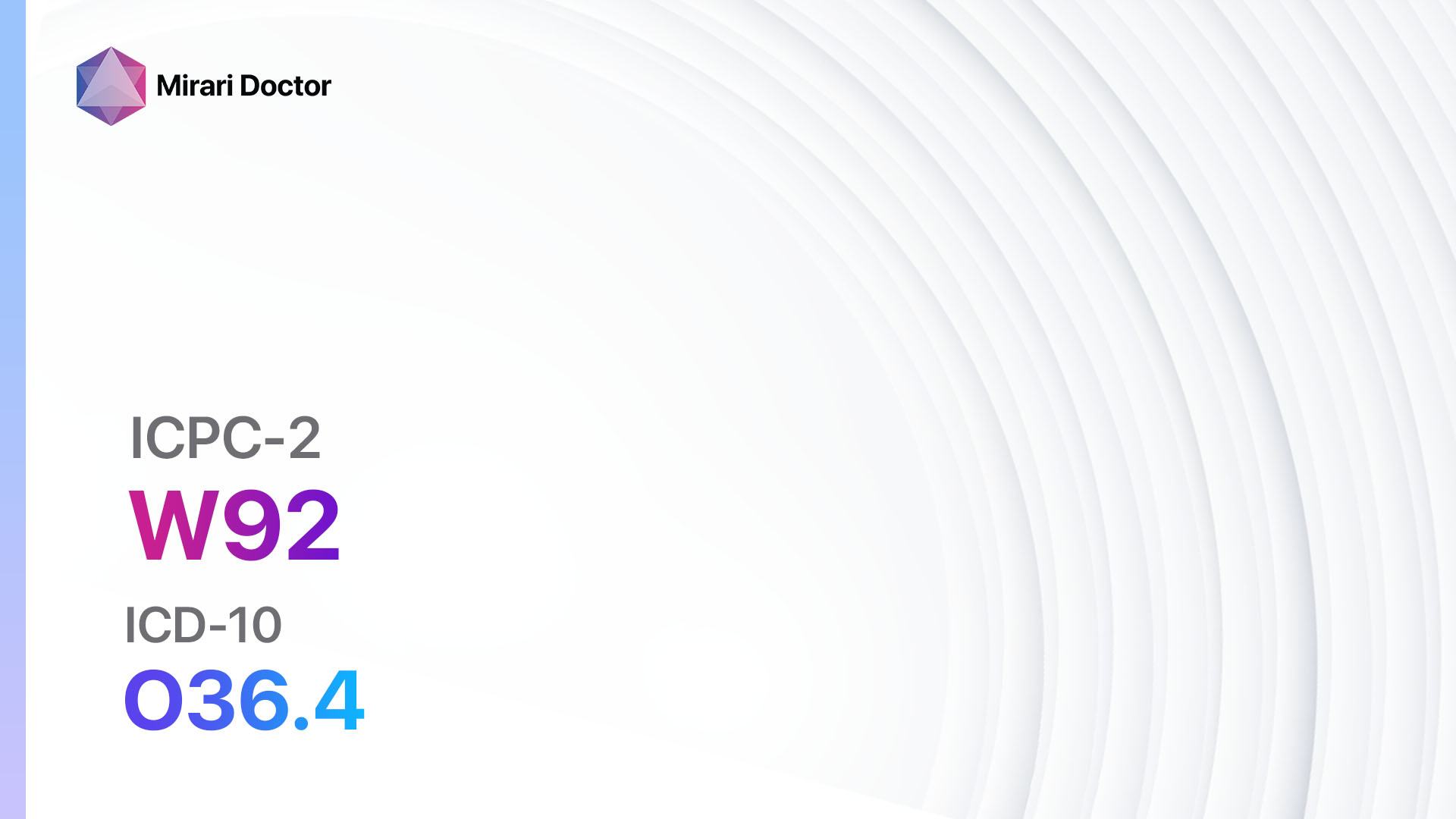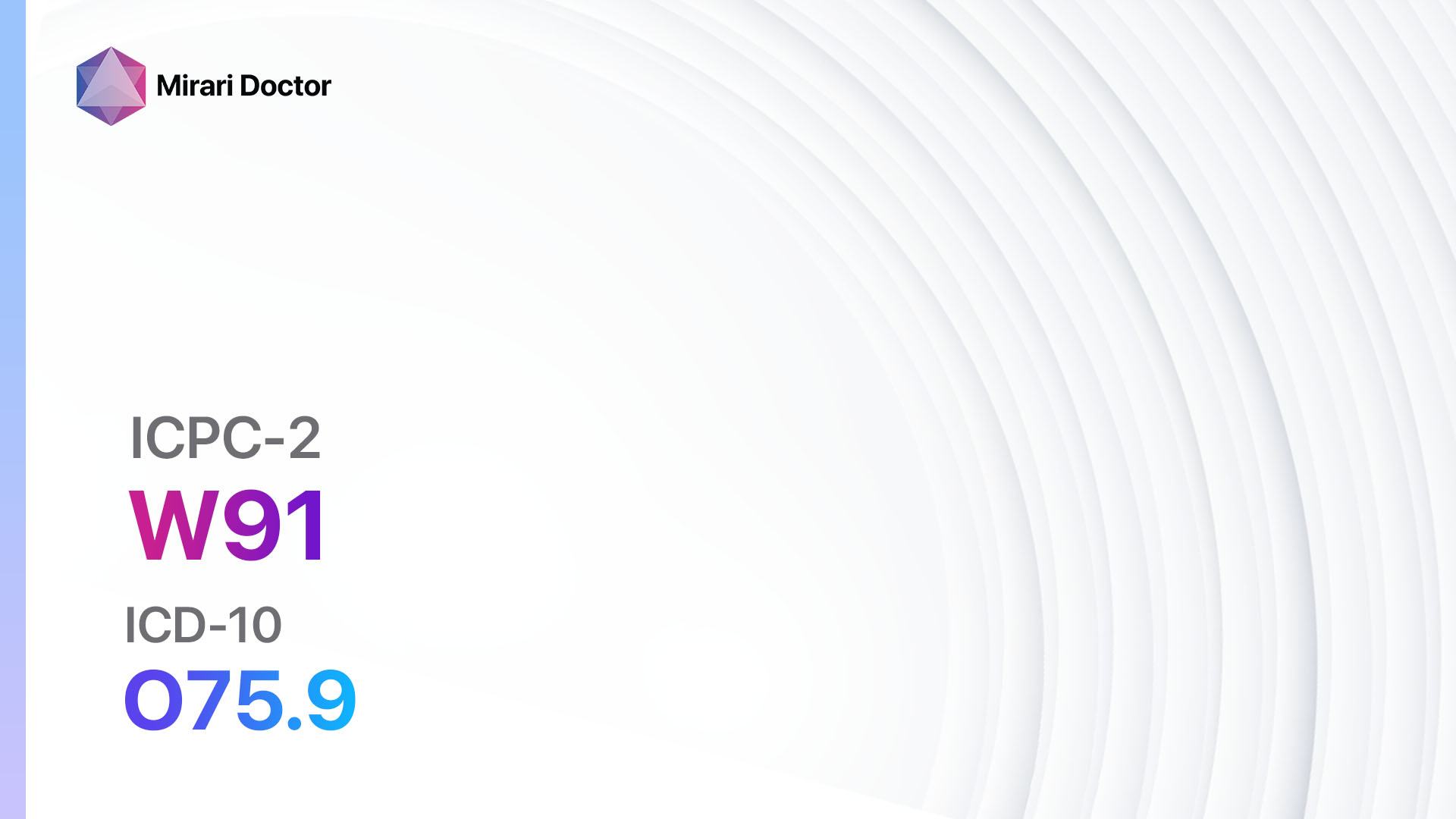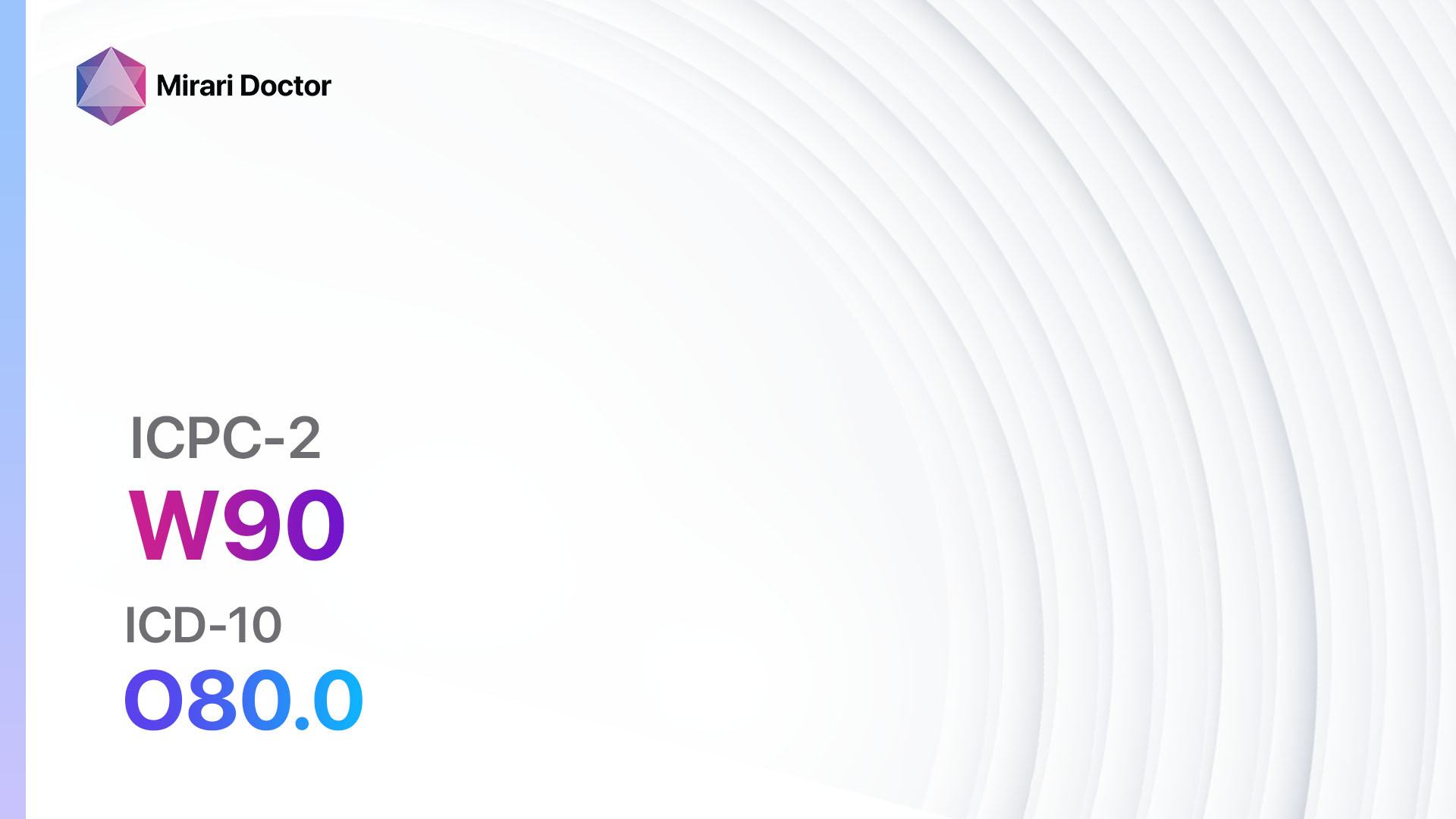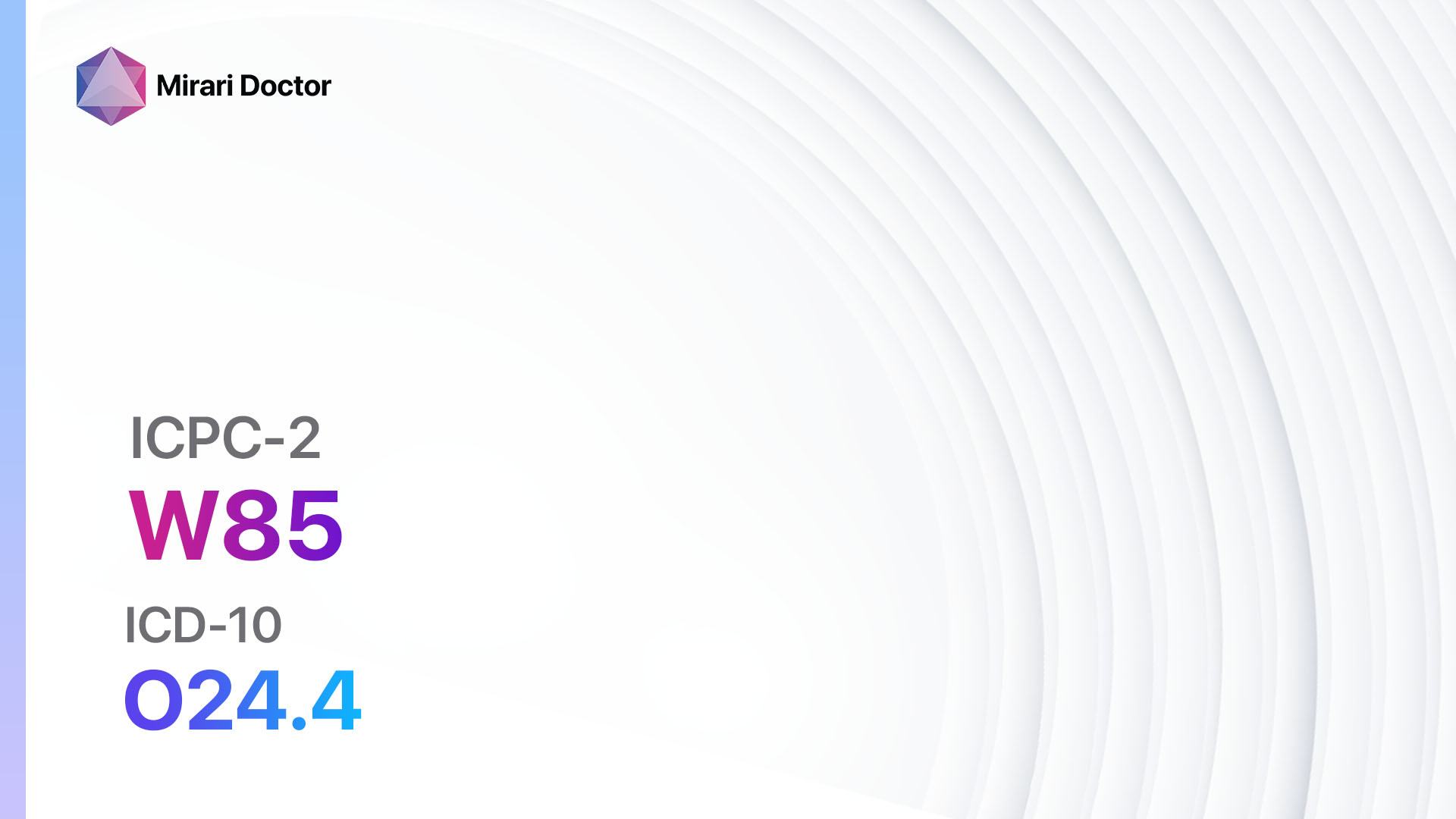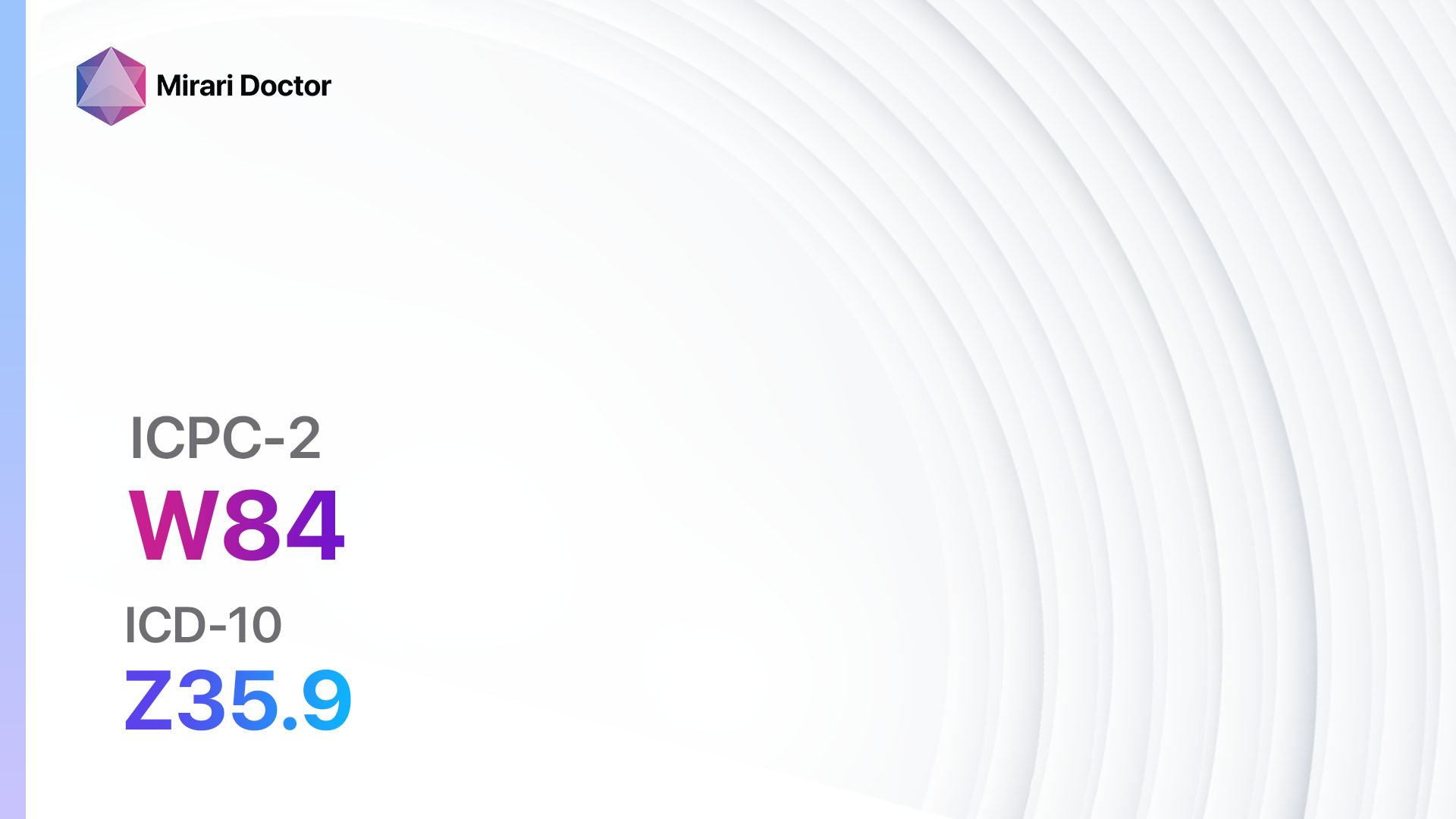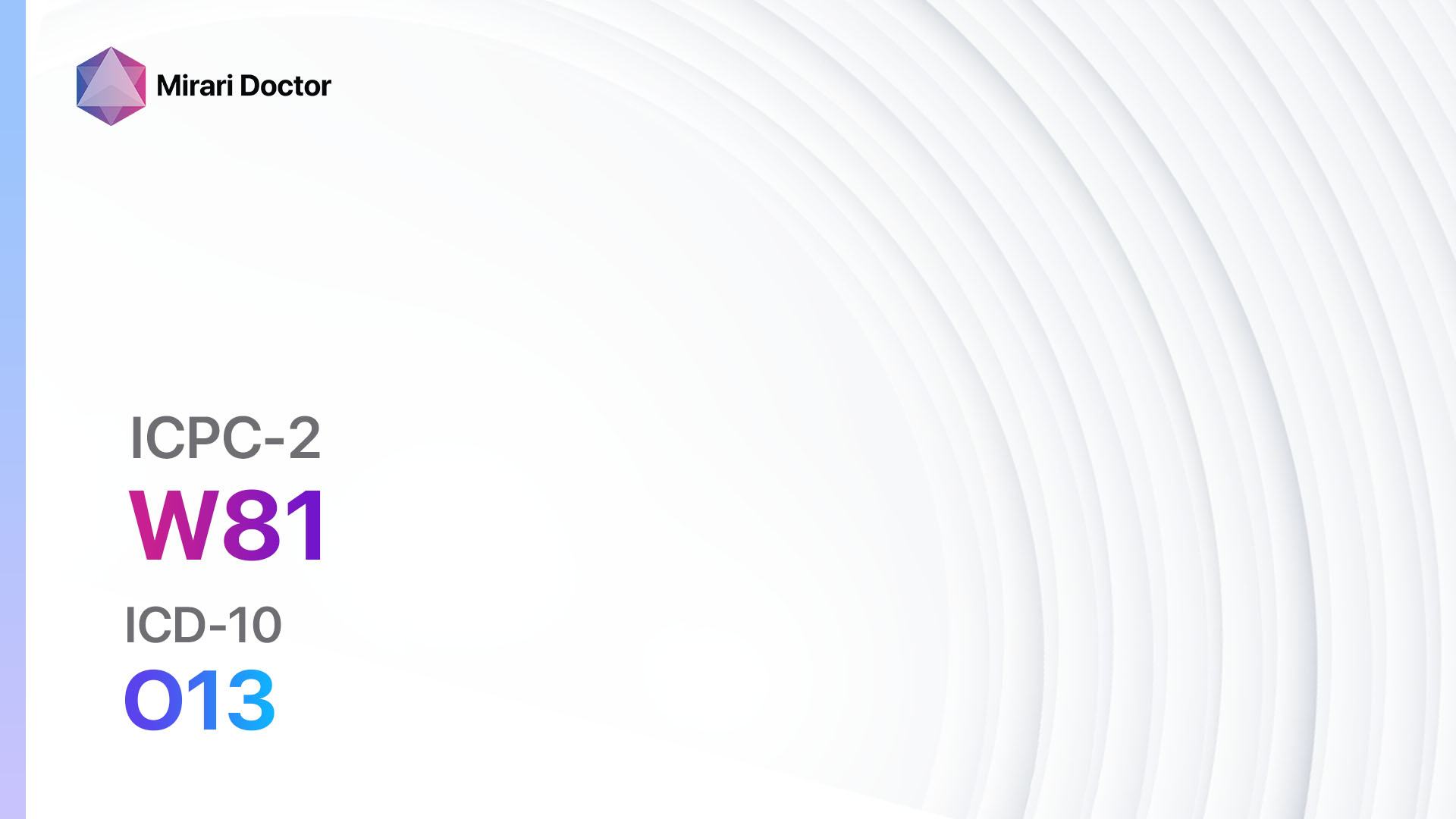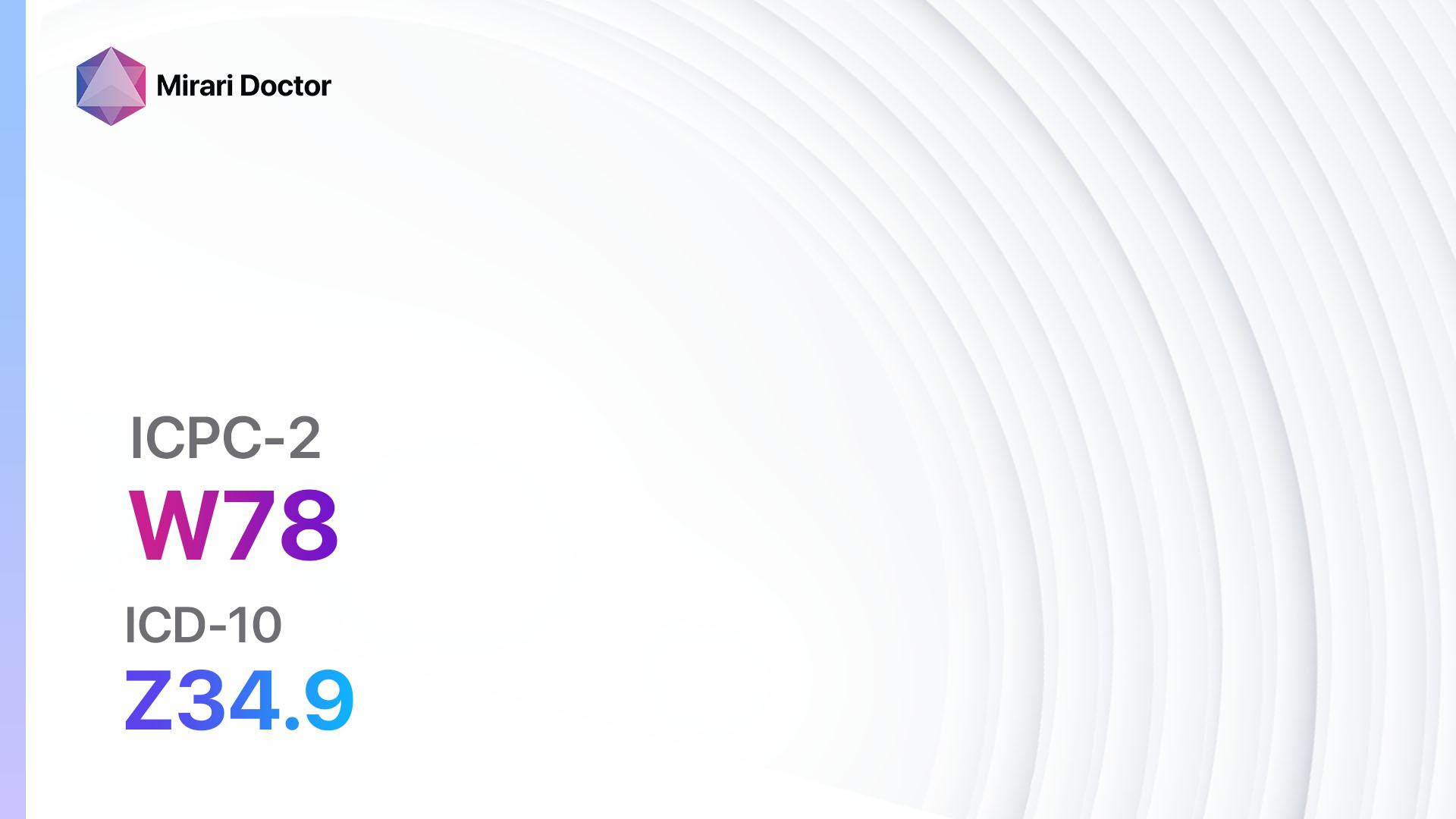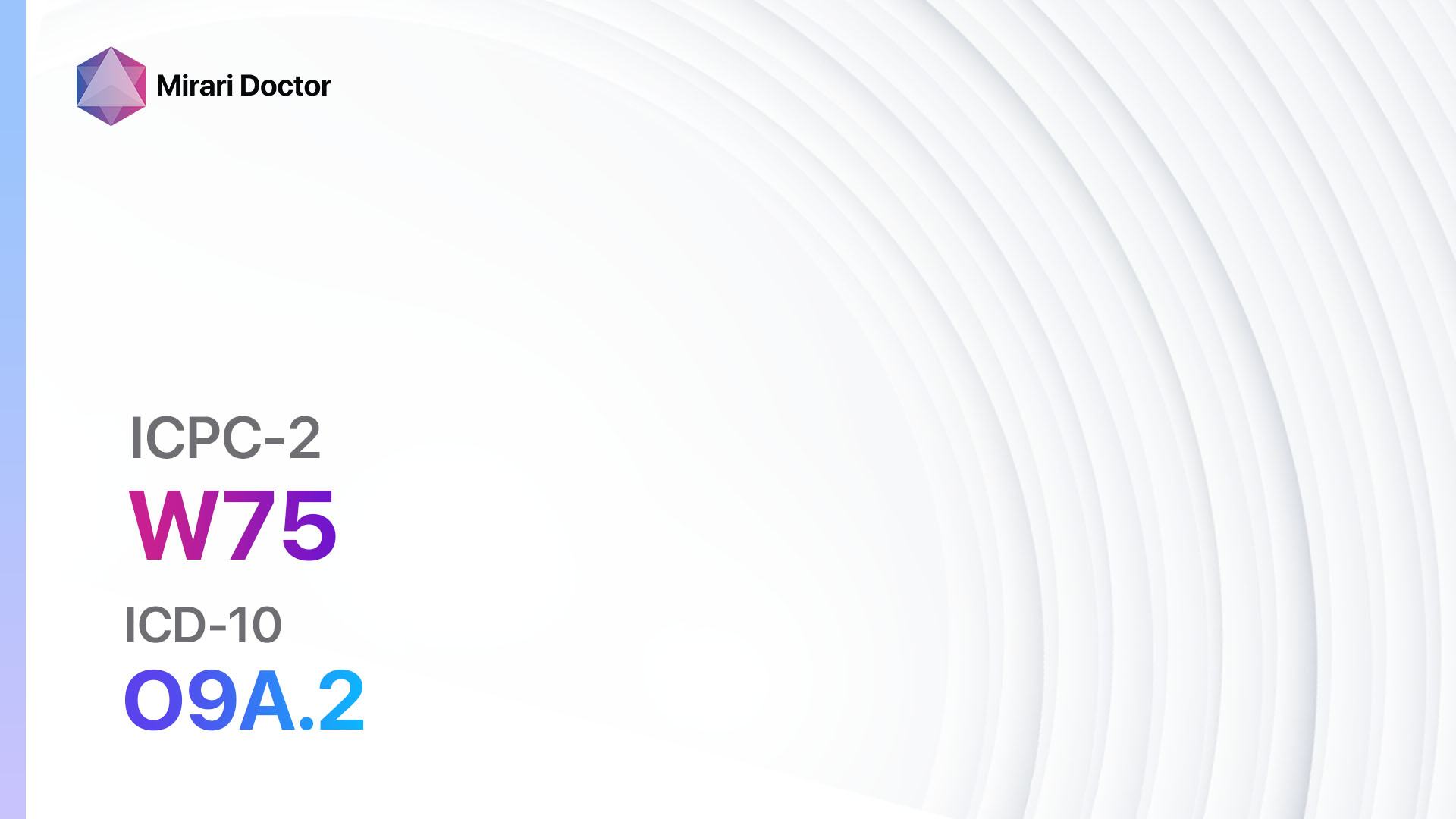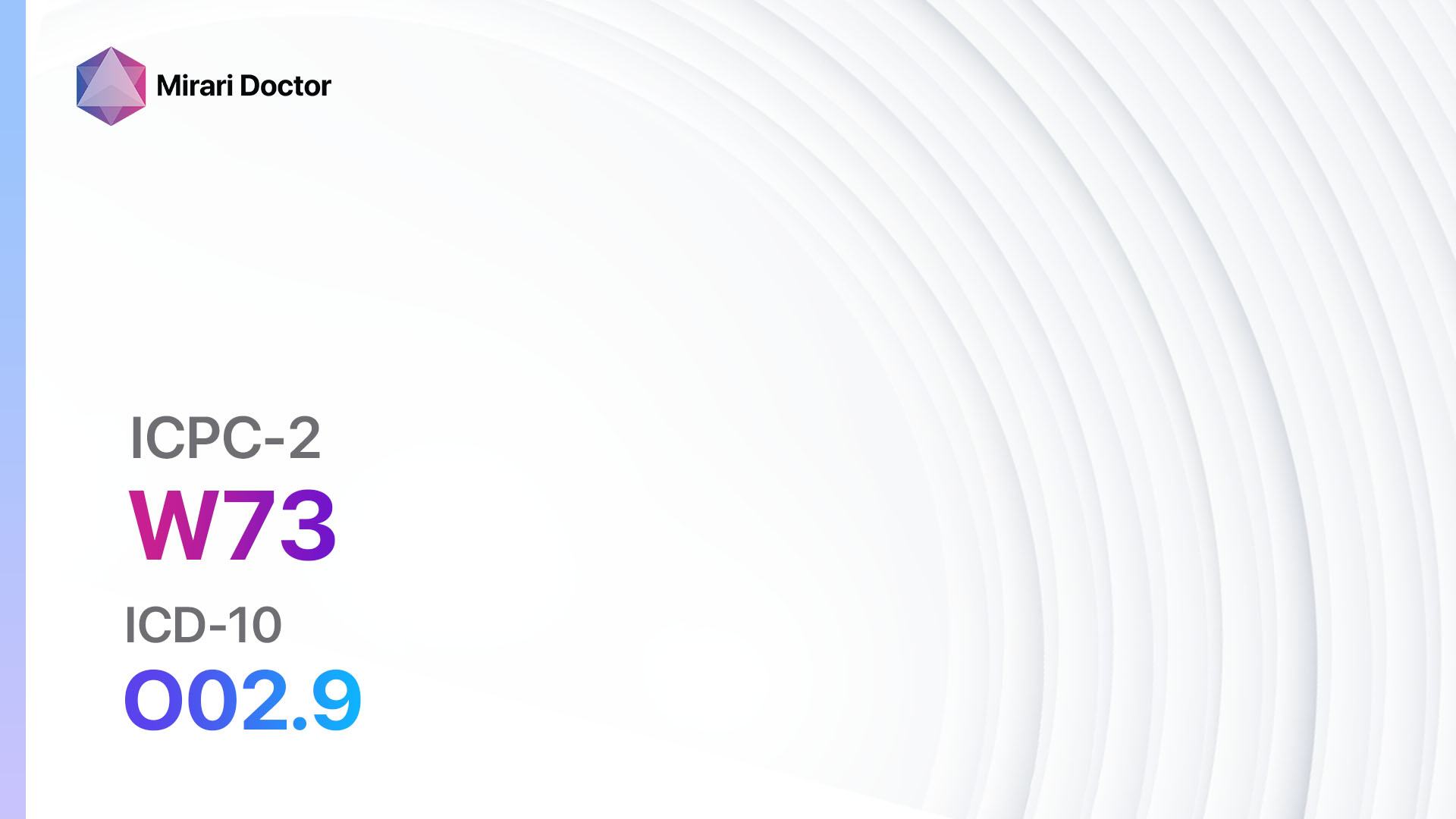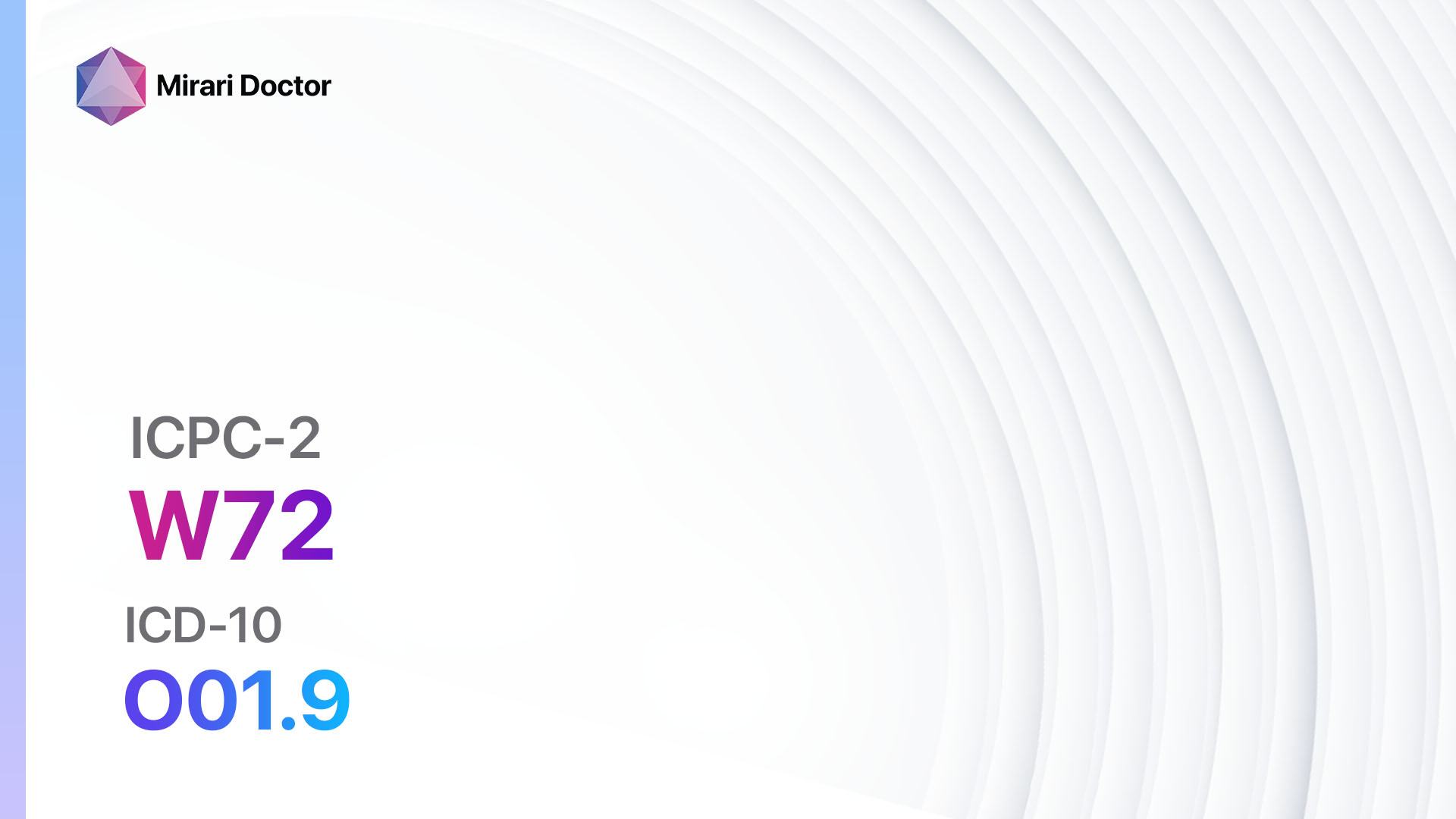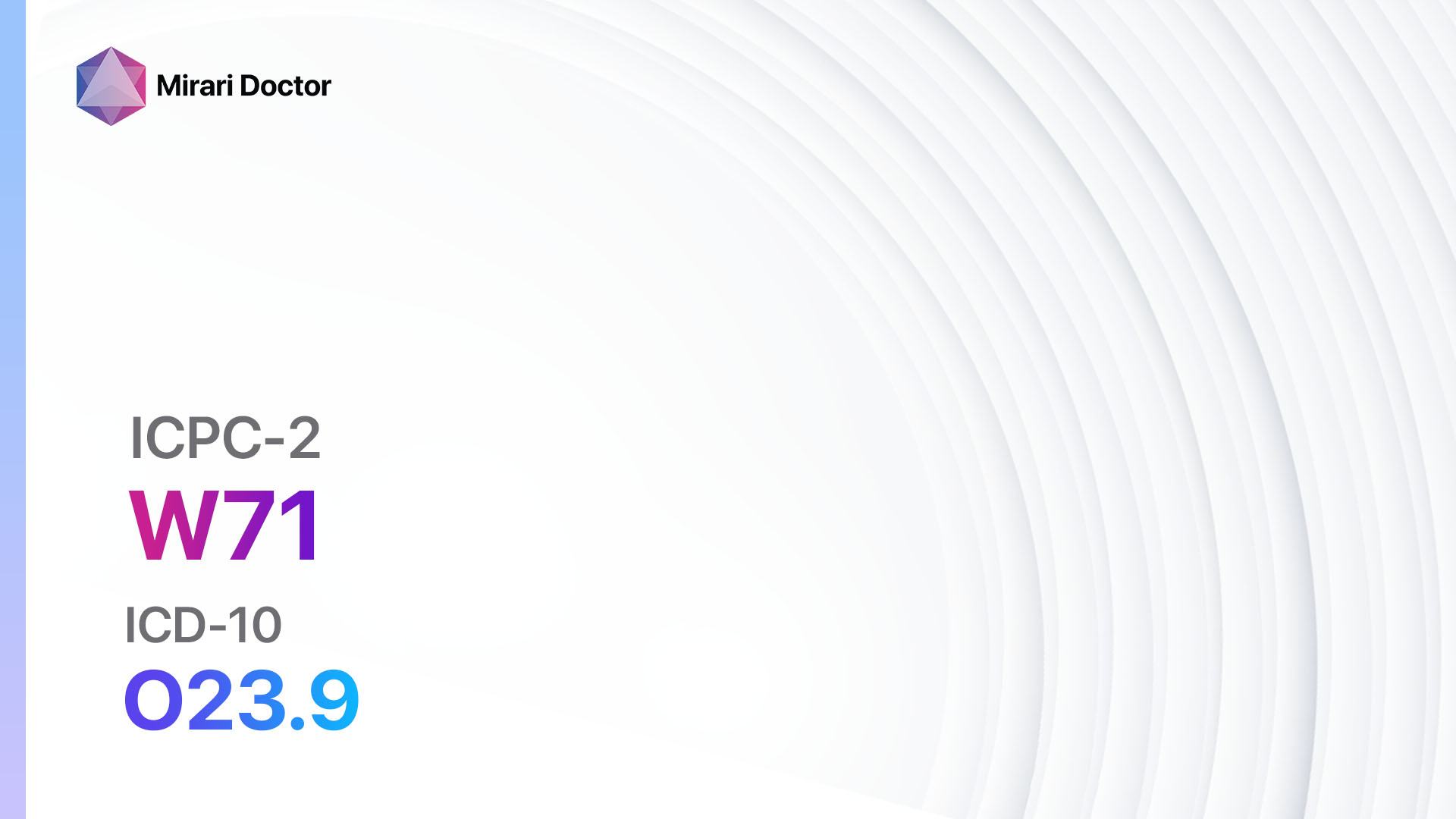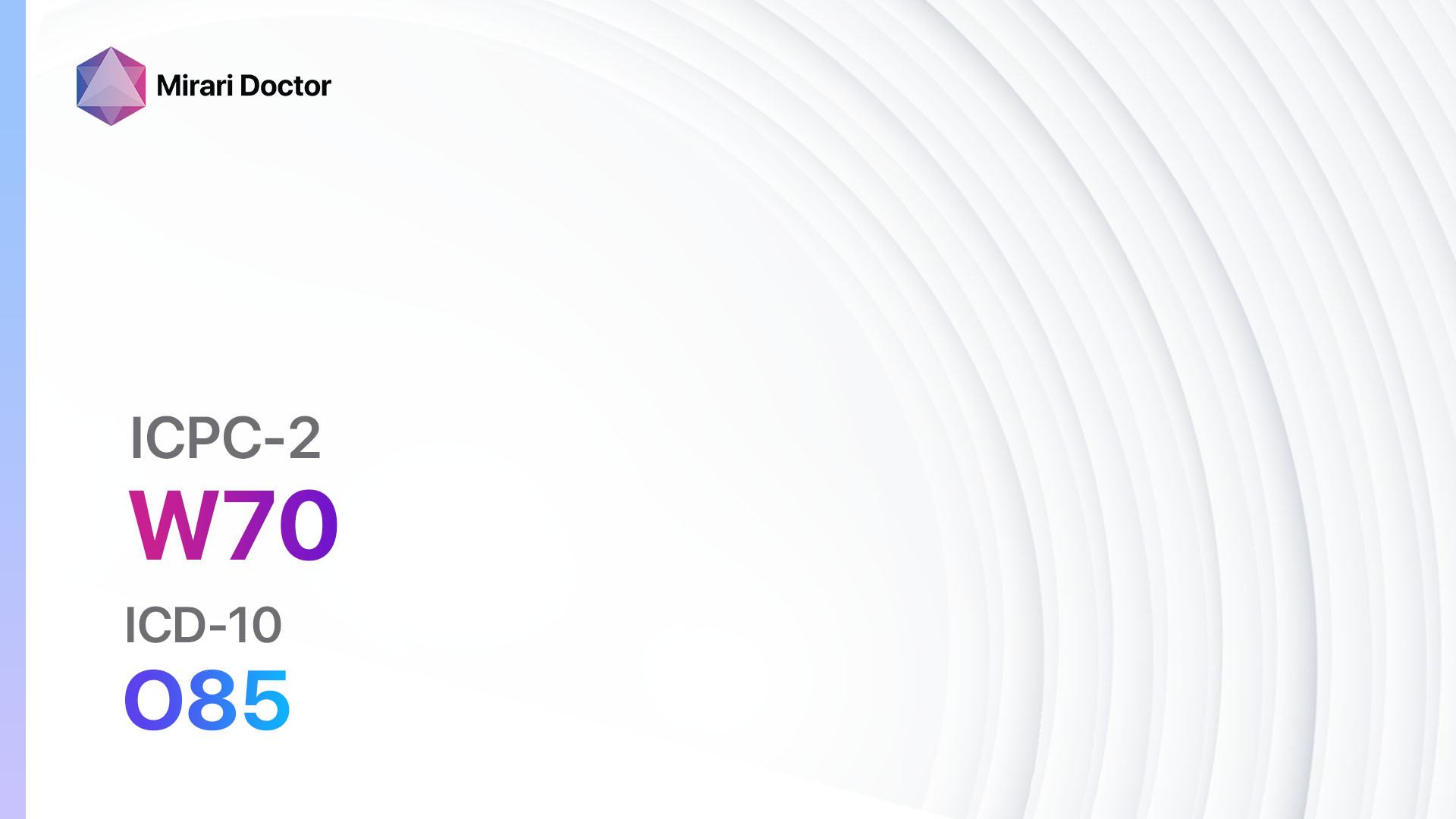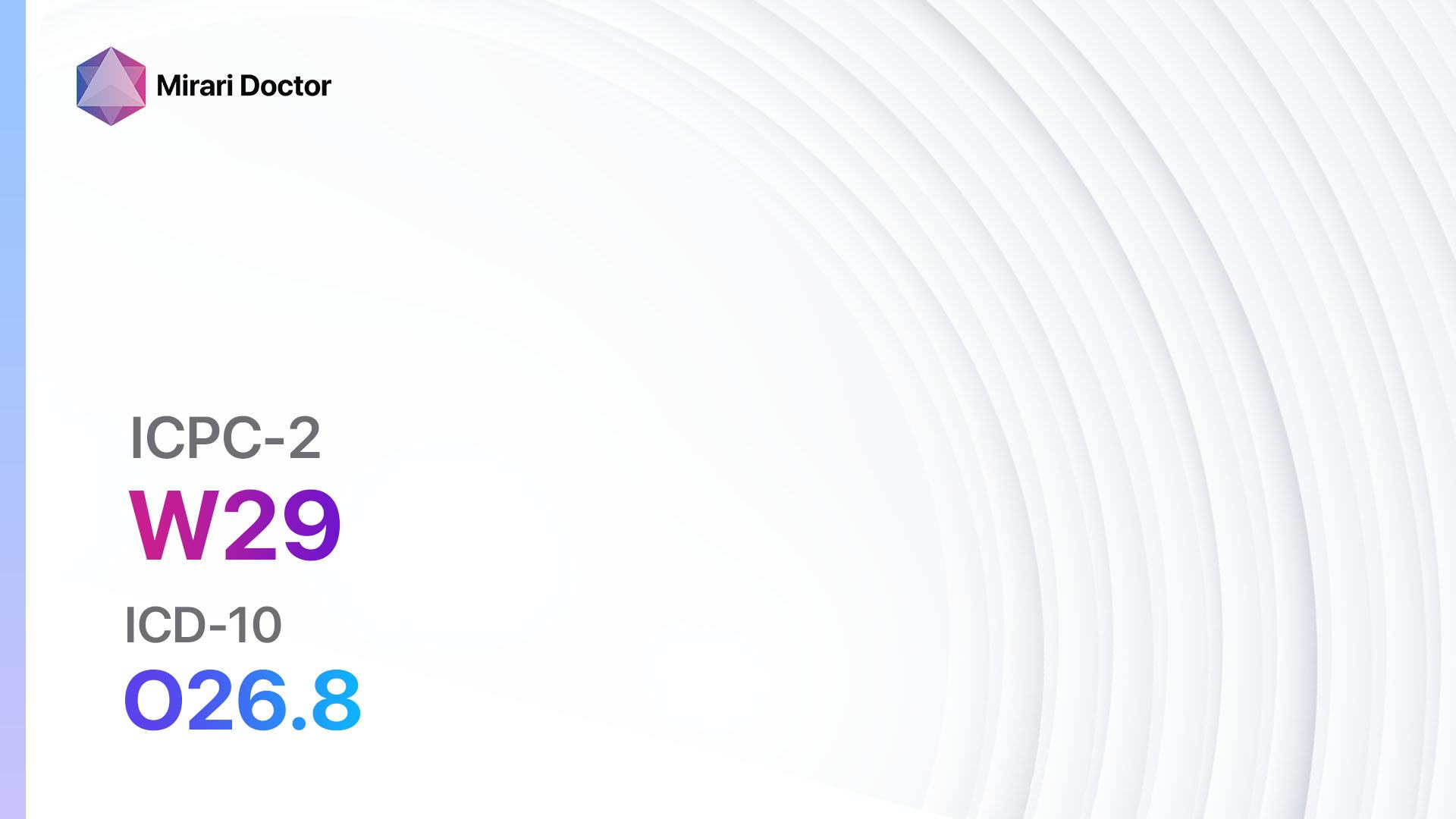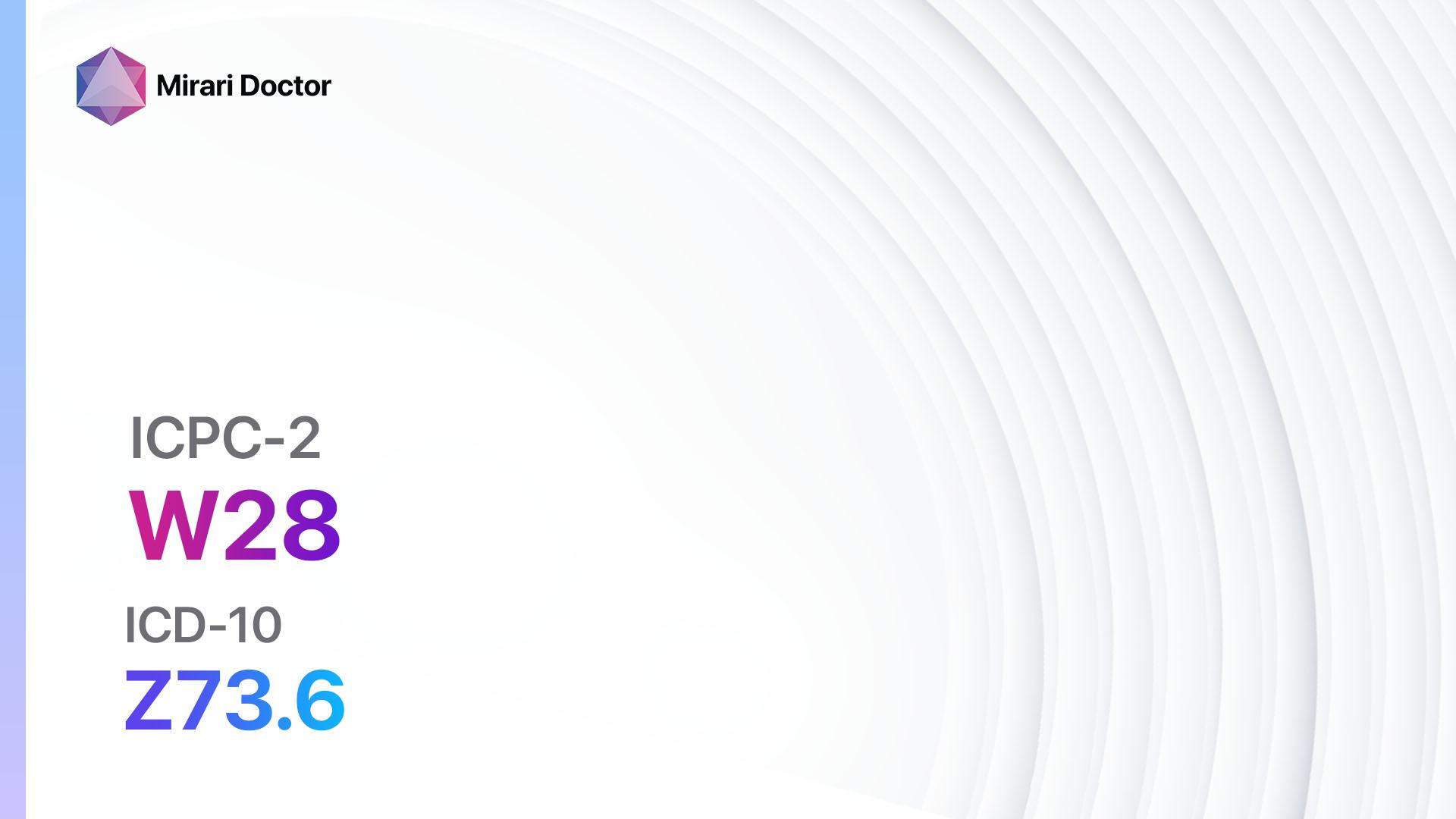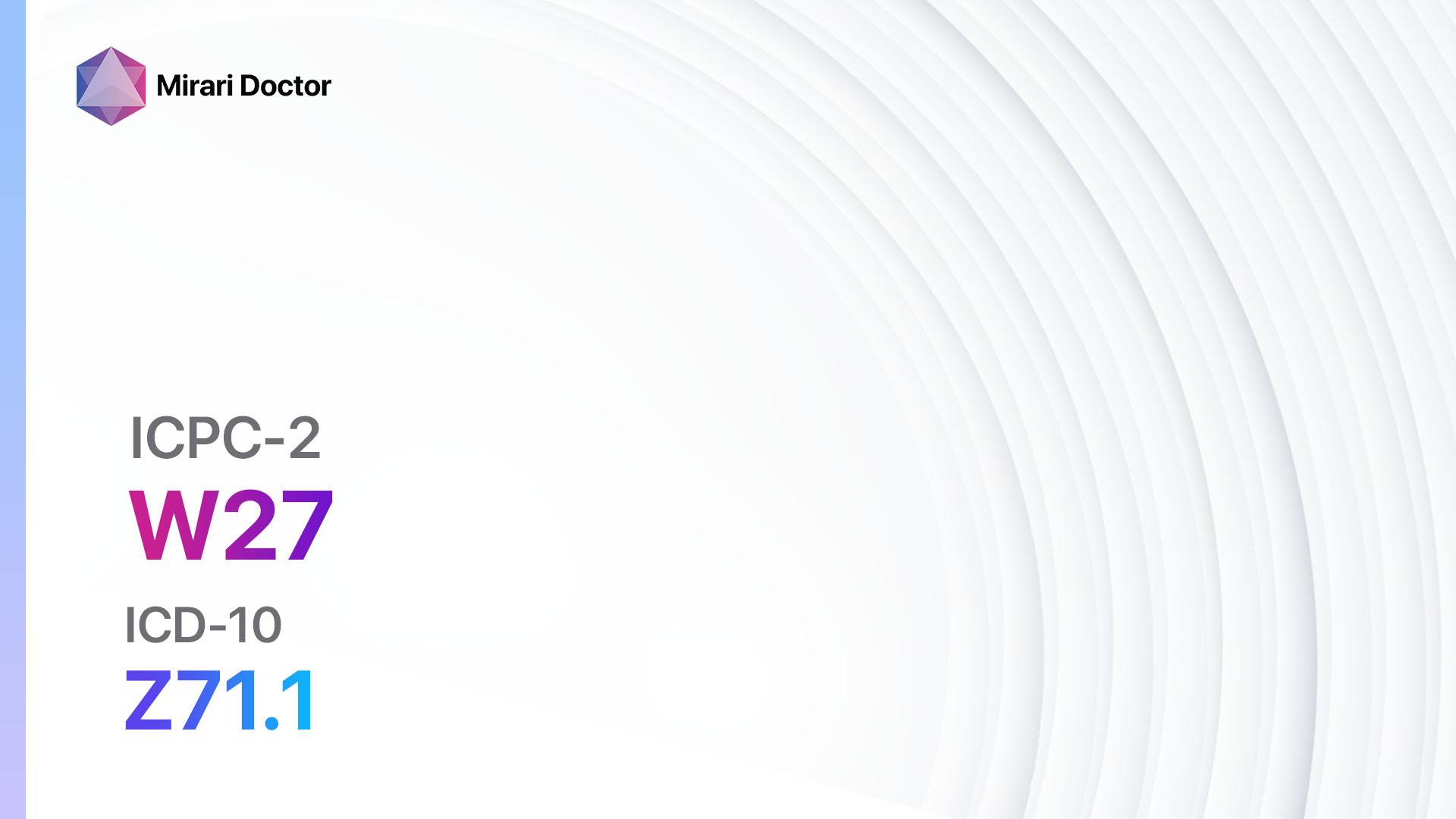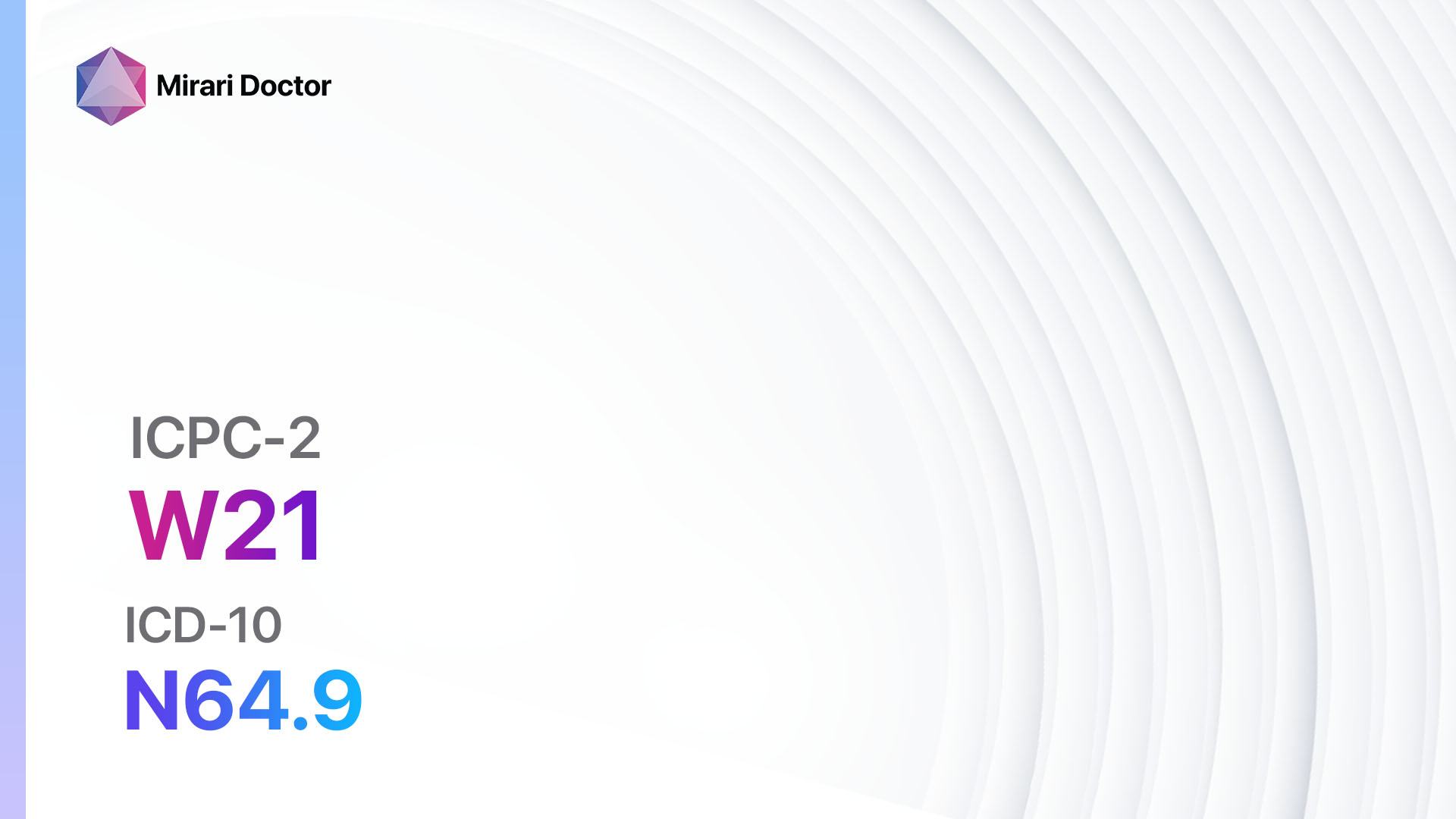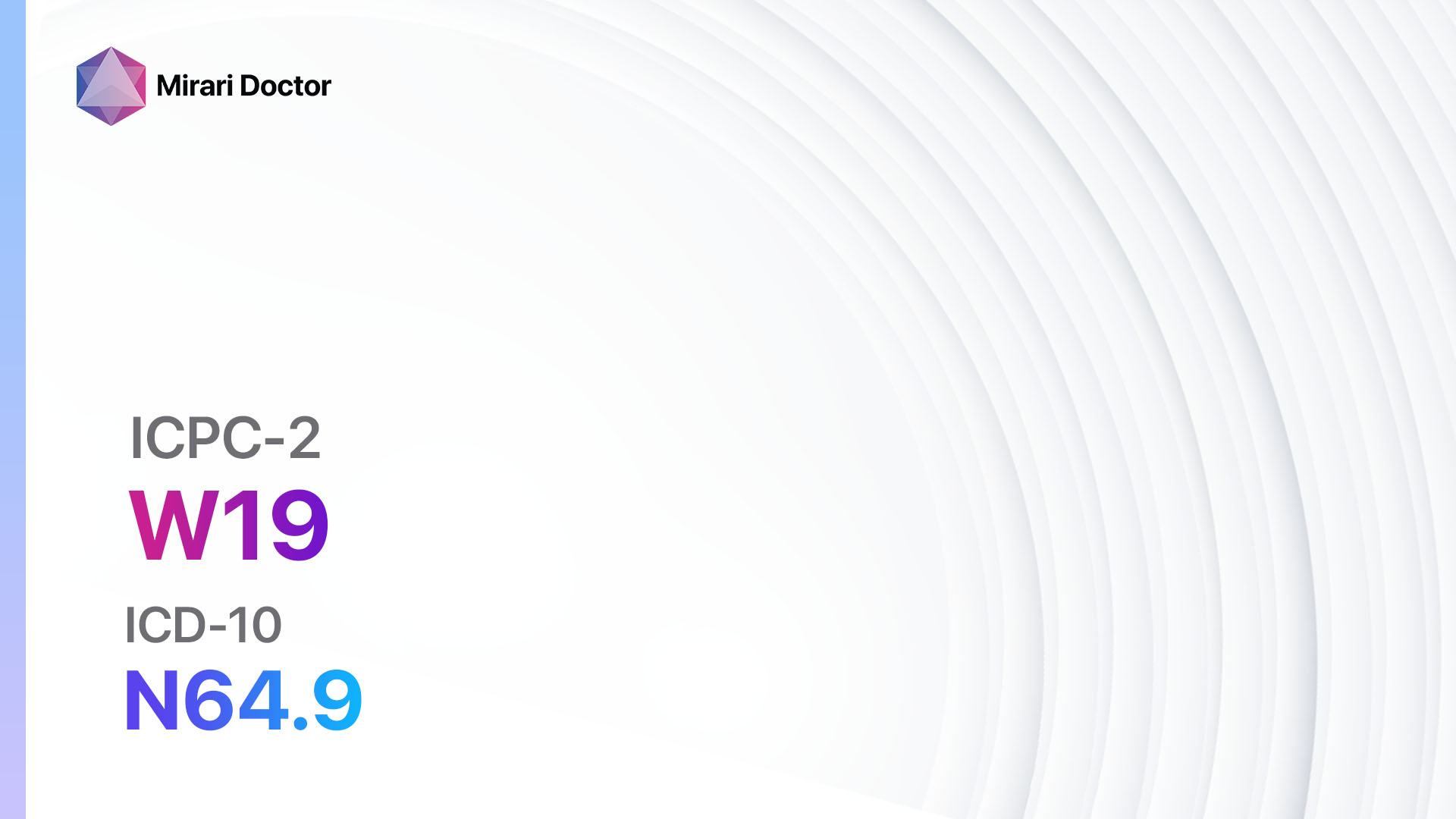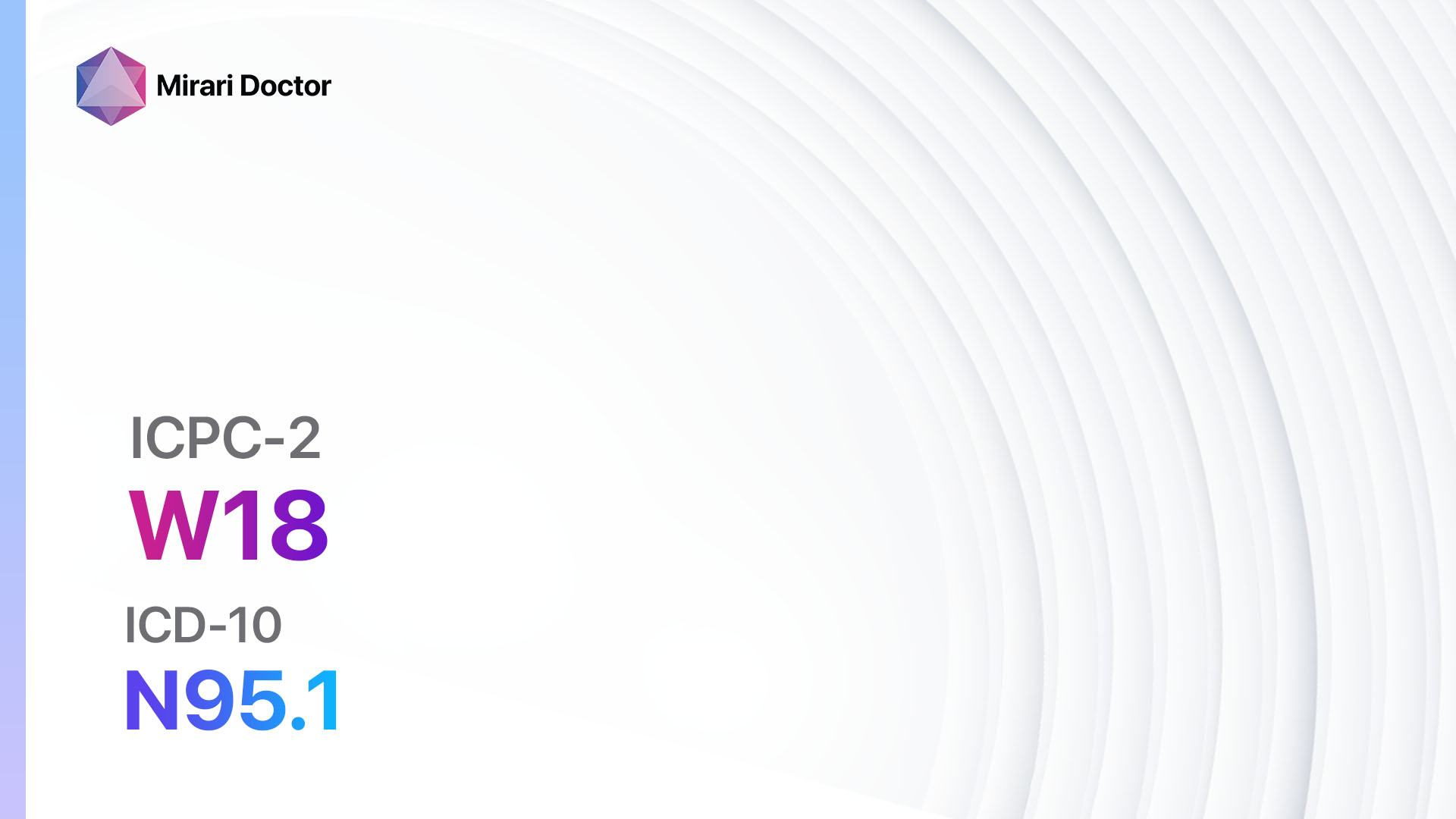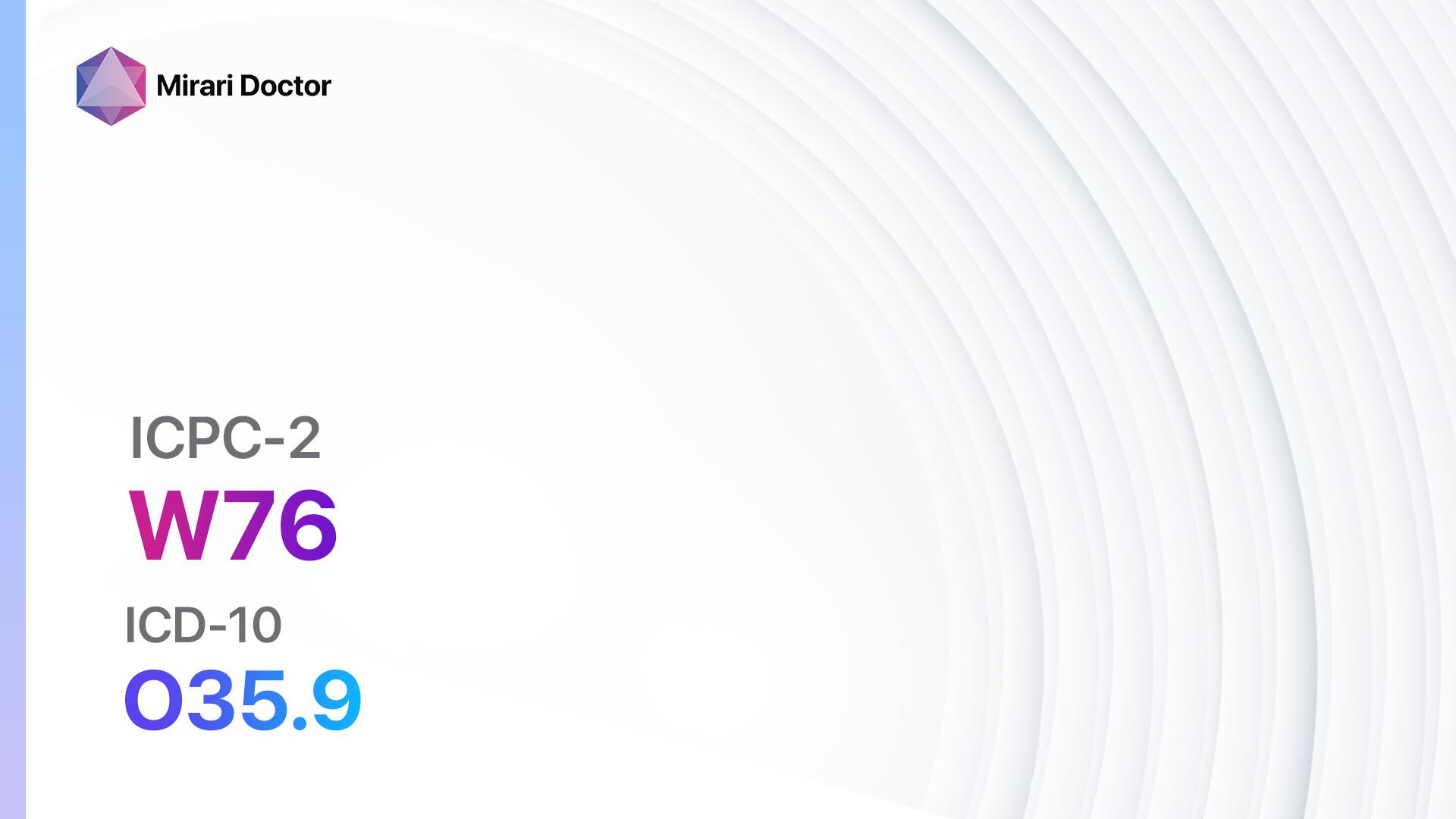
Introduction
Congenital anomalies complicating pregnancy refer to structural or functional abnormalities present in a developing fetus during pregnancy. These anomalies can have significant implications for both the mother and the baby[1]. The aim of this guide is to provide healthcare professionals with a comprehensive overview of the diagnosis and management of congenital anomalies complicating pregnancy.
Codes
- ICPC-2 Code: W76 Congenital anomaly complicating pregnancy[2]
- ICD-10 Code: O35.9 Maternal care for (suspected) fetal abnormality and damage, unspecified[3]
Symptoms
- Abnormal ultrasound findings: The presence of structural abnormalities in the fetus detected during routine ultrasound examinations[4].
- Maternal symptoms: In some cases, the mother may experience symptoms such as decreased fetal movement, vaginal bleeding, or abdominal pain[5].
Causes
- Genetic factors: Congenital anomalies can be caused by genetic mutations or chromosomal abnormalities inherited from one or both parents[6].
- Environmental factors: Exposure to certain medications, chemicals, or infections during pregnancy can increase the risk of congenital anomalies[7].
- Maternal health conditions: Pre-existing maternal health conditions such as diabetes or obesity can increase the risk of congenital anomalies in the fetus[8].
Diagnostic Steps
Medical History
- Obtain a detailed medical history from the mother, including any previous pregnancies, family history of congenital anomalies, and exposure to potential teratogens during pregnancy[9].
- Assess the mother’s overall health and any pre-existing medical conditions that may contribute to the development of congenital anomalies[10].
Physical Examination
- Perform a thorough physical examination of the mother, focusing on any signs or symptoms that may indicate the presence of a congenital anomaly.
- Assess the mother’s vital signs and general appearance to evaluate her overall health and well-being.
Laboratory Tests
- Genetic testing: Offer genetic testing to the mother and/or father to identify any genetic mutations or chromosomal abnormalities that may be contributing to the development of the congenital anomaly.
- Blood tests: Perform routine blood tests to assess the mother’s overall health and screen for any underlying medical conditions that may be associated with congenital anomalies.
- Infectious disease screening: Test the mother for any infectious diseases that may increase the risk of congenital anomalies, such as rubella or toxoplasmosis.
Diagnostic Imaging
- Ultrasound: Perform a detailed ultrasound examination to visualize the fetus and identify any structural abnormalities.
- Magnetic Resonance Imaging (MRI): In some cases, an MRI may be recommended to provide additional information about the fetal anatomy and aid in the diagnosis of congenital anomalies.
Other Tests
- Amniocentesis: Offer amniocentesis to the mother to obtain a sample of amniotic fluid for genetic testing and further evaluation of the fetus.
- Fetal echocardiography: Perform a specialized ultrasound examination of the fetal heart to assess for any cardiac abnormalities.
- Biopsy or genetic counseling: Offer genetic counseling to the parents to discuss the implications of the congenital anomaly and provide information about available treatment options.
Follow-up and Patient Education
- Schedule regular follow-up appointments to monitor the progress of the pregnancy and assess the well-being of both the mother and the fetus.
- Provide comprehensive patient education to the mother and her family about the congenital anomaly, its implications, and available treatment options.
Possible Interventions
Traditional Interventions
Medications:
Top 5 drugs for Congenital anomaly complicating pregnancy:
- Folic acid:
- Cost: $5-$10/month.
- Contraindications: None.
- Side effects: Rare, but may include nausea or allergic reactions.
- Severe side effects: None reported.
- Drug interactions: None reported.
- Warning: Folic acid supplementation is recommended for all pregnant women to reduce the risk of neural tube defects.
- Antibiotics (e.g., Penicillin, Erythromycin):
- Cost: Varies depending on the specific antibiotic.
- Contraindications: Known allergies or sensitivities to the antibiotic.
- Side effects: Nausea, diarrhea, or allergic reactions.
- Severe side effects: Rare, but may include severe allergic reactions or antibiotic-associated colitis.
- Drug interactions: Varies depending on the specific antibiotic.
- Warning: Antibiotics may be prescribed to treat or prevent infections that can contribute to congenital anomalies.
- Antiviral medications (e.g., Acyclovir, Valacyclovir):
- Cost: Varies depending on the specific medication.
- Contraindications: Known allergies or sensitivities to the antiviral medication.
- Side effects: Nausea, headache, or dizziness.
- Severe side effects: Rare, but may include severe allergic reactions or kidney damage.
- Drug interactions: Varies depending on the specific antiviral medication.
- Warning: Antiviral medications may be prescribed to treat or prevent viral infections that can affect the developing fetus.
- Corticosteroids (e.g., Dexamethasone, Betamethasone):
- Cost: Varies depending on the specific corticosteroid.
- Contraindications: Known allergies or sensitivities to corticosteroids.
- Side effects: Increased appetite, weight gain, or mood changes.
- Severe side effects: Rare, but may include adrenal suppression or increased risk of infection.
- Drug interactions: Varies depending on the specific corticosteroid.
- Warning: Corticosteroids may be prescribed to promote fetal lung maturation in cases of preterm labor or to manage certain fetal conditions.
- Anticoagulants (e.g., Heparin, Warfarin):
- Cost: Varies depending on the specific anticoagulant.
- Contraindications: Known allergies or sensitivities to anticoagulants, active bleeding, or certain medical conditions.
- Side effects: Increased risk of bleeding.
- Severe side effects: Rare, but may include severe bleeding or allergic reactions.
- Drug interactions: Varies depending on the specific anticoagulant.
- Warning: Anticoagulants may be prescribed to manage certain maternal conditions or prevent blood clots during pregnancy.
Alternative Drugs:
- Antiepileptic medications: May be prescribed to manage seizures or prevent seizures in pregnant women with epilepsy.
- Antihypertensive medications: May be prescribed to manage high blood pressure in pregnant women.
- Thyroid medications: May be prescribed to manage thyroid disorders in pregnant women.
- Antidepressant medications: May be prescribed to manage depression or anxiety in pregnant women.
Surgical Procedures:
- In some cases, surgical intervention may be necessary to correct or manage certain congenital anomalies. The specific surgical procedures will vary depending on the type and severity of the anomaly.
Alternative Interventions
- Acupuncture: May help alleviate stress and promote relaxation during pregnancy. Cost: $60-$120 per session.
- Chiropractic care: May help improve overall spinal alignment and relieve discomfort during pregnancy. Cost: $50-$100 per session.
- Prenatal yoga: May help improve flexibility, strength, and relaxation during pregnancy. Cost: $10-$20 per class.
- Massage therapy: May help relieve muscle tension and promote relaxation during pregnancy. Cost: $60-$100 per session.
- Herbal supplements: Some herbal supplements, such as ginger or chamomile, may help alleviate certain symptoms associated with pregnancy. Cost: Varies depending on the specific supplement.
Lifestyle Interventions
- Healthy diet: Encourage the mother to maintain a balanced and nutritious diet during pregnancy to support the overall health and development of the fetus. Cost: Varies depending on food choices.
- Regular exercise: Encourage the mother to engage in regular physical activity, such as walking or swimming, to promote overall health and well-being during pregnancy. Cost: Varies depending on the chosen activity.
- Adequate rest and sleep: Emphasize the importance of getting enough rest and sleep during pregnancy to support the mother’s overall health and well-being. Cost: None.
- Stress management: Encourage the mother to engage in stress-reducing activities, such as meditation or deep breathing exercises, to promote relaxation and emotional well-being during pregnancy. Cost: None.
- Avoidance of teratogens: Educate the mother about the importance of avoiding exposure to potential teratogens, such as certain medications, chemicals, or infections, during pregnancy. Cost: None.
It is important to note that the cost ranges provided are approximate and may vary depending on the location and availability of the interventions.
Mirari Cold Plasma Alternative Intervention
Understanding Mirari Cold Plasma
- Safe and Non-Invasive Treatment: Mirari Cold Plasma is a safe and non-invasive treatment option for various skin conditions. It does not require incisions, minimizing the risk of scarring, bleeding, or tissue damage.
- Efficient Extraction of Foreign Bodies: Mirari Cold Plasma facilitates the removal of foreign bodies from the skin by degrading and dissociating organic matter, allowing easier access and extraction.
- Pain Reduction and Comfort: Mirari Cold Plasma has a local analgesic effect, providing pain relief during the treatment, making it more comfortable for the patient.
- Reduced Risk of Infection: Mirari Cold Plasma has antimicrobial properties, effectively killing bacteria and reducing the risk of infection.
- Accelerated Healing and Minimal Scarring: Mirari Cold Plasma stimulates wound healing and tissue regeneration, reducing healing time and minimizing the formation of scars.
Mirari Cold Plasma Prescription
Video instructions for using Mirari Cold Plasma Device – W76 Congenital anomaly complicating pregnancy (ICD-10:O35.9)
| Mild | Moderate | Severe |
| Mode setting: 1 (Infection) Location: 2 (Prostate & Uterus) Morning: 15 minutes, Evening: 15 minutes |
Mode setting: 1 (Infection) Location: 2 (Prostate & Uterus) Morning: 30 minutes, Lunch: 30 minutes, Evening: 30 minutes |
Mode setting: 1 (Infection) Location: 2 (Prostate & Uterus) Morning: 30 minutes, Lunch: 30 minutes, Evening: 30 minutes |
| Mode setting: 2 (Wound Healing) Location: 2 (Prostate & Uterus) Morning: 15 minutes, Evening: 15 minutes |
Mode setting: 2 (Wound Healing) Location: 2 (Prostate & Uterus) Morning: 30 minutes, Lunch: 30 minutes, Evening: 30 minutes |
Mode setting: 2 (Wound Healing) Location: 2 (Prostate & Uterus) Morning: 30 minutes, Lunch: 30 minutes, Evening: 30 minutes |
| Mode setting: 3 (Antiviral Therapy) Location: 0 (Localized) Morning: 15 minutes, Evening: 15 minutes |
Mode setting: 3 (Antiviral Therapy) Location: 0 (Localized) Morning: 30 minutes, Lunch: 30 minutes, Evening: 30 minutes |
Mode setting: 3 (Antiviral Therapy) Location: 0 (Localized) Morning: 30 minutes, Lunch: 30 minutes, Evening: 30 minutes |
| Total Morning: 45 minutes approx. $7.50 USD, Evening: 45 minutes approx. $7.50 USD |
Total Morning: 90 minutes approx. $15 USD, Lunch: 90 minutes approx. $15 USD, Evening: 90 minutes approx. $15 USD |
Total Morning: 90 minutes approx. $15 USD, Lunch: 90 minutes approx. $15 USD, Evening: 90 minutes approx. $15 USD |
| Usual treatment for 7-60 days approx. $105 USD – $900 USD | Usual treatment for 6-8 weeks approx. $1,890 USD – $2,520 USD |
Usual treatment for 3-6 months approx. $4,050 USD – $8,100 USD
|
 |
|
Use the Mirari Cold Plasma device to treat Congenital anomaly complicating pregnancy effectively.
WARNING: MIRARI COLD PLASMA IS DESIGNED FOR THE HUMAN BODY WITHOUT ANY ARTIFICIAL OR THIRD PARTY PRODUCTS. USE OF OTHER PRODUCTS IN COMBINATION WITH MIRARI COLD PLASMA MAY CAUSE UNPREDICTABLE EFFECTS, HARM OR INJURY. PLEASE CONSULT A MEDICAL PROFESSIONAL BEFORE COMBINING ANY OTHER PRODUCTS WITH USE OF MIRARI.
Step 1: Cleanse the Skin
- Start by cleaning the affected area of the skin with a gentle cleanser or mild soap and water. Gently pat the area dry with a clean towel.
Step 2: Prepare the Mirari Cold Plasma device
- Ensure that the Mirari Cold Plasma device is fully charged or has fresh batteries as per the manufacturer’s instructions. Make sure the device is clean and in good working condition.
- Switch on the Mirari device using the power button or by following the specific instructions provided with the device.
- Some Mirari devices may have adjustable settings for intensity or treatment duration. Follow the manufacturer’s instructions to select the appropriate settings based on your needs and the recommended guidelines.
Step 3: Apply the Device
- Place the Mirari device in direct contact with the affected area of the skin. Gently glide or hold the device over the skin surface, ensuring even coverage of the area experiencing.
- Slowly move the Mirari device in a circular motion or follow a specific pattern as indicated in the user manual. This helps ensure thorough treatment coverage.
Step 4: Monitor and Assess:
- Keep track of your progress and evaluate the effectiveness of the Mirari device in managing your Congenital anomaly complicating pregnancy. If you have any concerns or notice any adverse reactions, consult with your health care professional.
Note
This guide is for informational purposes only and should not replace the advice of a medical professional. Always consult with your healthcare provider or a qualified medical professional for personal advice, diagnosis, or treatment. Do not solely rely on the information presented here for decisions about your health. Use of this information is at your own risk. The authors of this guide, nor any associated entities or platforms, are not responsible for any potential adverse effects or outcomes based on the content.
Mirari Cold Plasma System Disclaimer
- Purpose: The Mirari Cold Plasma System is a Class 2 medical device designed for use by trained healthcare professionals. It is registered for use in Thailand and Vietnam. It is not intended for use outside of these locations.
- Informational Use: The content and information provided with the device are for educational and informational purposes only. They are not a substitute for professional medical advice or care.
- Variable Outcomes: While the device is approved for specific uses, individual outcomes can differ. We do not assert or guarantee specific medical outcomes.
- Consultation: Prior to utilizing the device or making decisions based on its content, it is essential to consult with a Certified Mirari Tele-Therapist and your medical healthcare provider regarding specific protocols.
- Liability: By using this device, users are acknowledging and accepting all potential risks. Neither the manufacturer nor the distributor will be held accountable for any adverse reactions, injuries, or damages stemming from its use.
- Geographical Availability: This device has received approval for designated purposes by the Thai and Vietnam FDA. As of now, outside of Thailand and Vietnam, the Mirari Cold Plasma System is not available for purchase or use.
References
- WHO. Undated. Congenital anomalies. World Health Organization. https://www.who.int/health-topics/congenital-anomalies#tab=tab_1 [Accessed July 2022]
- Appendix 4: Code groups from ICPC-2 and ICPC-2 PLUS. https://ses.library.usyd.edu.au/recaptcha?handle=2123%2F9365&name=Appendix_4_YEAR_15.pdf&sequence=5 [Accessed June 2023]
- ICD-10 Code for Maternal care for (suspected) fetal abnormality and damage, unspecified. https://www.aapc.com/codes/icd-10-codes/O35.9 [Accessed June 2023]
- Congenital anomalies: Case definition and guidelines for data collection, analysis, and presentation of immunization safety data. https://www.ncbi.nlm.nih.gov/pmc/articles/PMC5139892/ [Accessed June 2023]
- Management of Pregnancy and Delivery in Prenatally Diagnosed Congenital Anomalies. https://www.intechopen.com/chapters/58185 [Accessed June 2023]
- Risk factors for congenital anomalies in high risk pregnant women: A large study from South India. https://www.sciencedirect.com/science/article/pii/S1110863016300064 [Accessed June 2023]
- How many people are affected by/at risk for congenital anomalies? https://www.nichd.nih.gov/health/topics/congenital-anomalies/conditioninfo/risk [Accessed June 2023]
- Congenital anomalies: What to do if you receive a serious diagnosis. https://www.babycenter.com/pregnancy/health-and-safety/congenital-anomalies_40009842 [Accessed June 2023]
- Nadeau-Vallée, Mathieu ; Obari, Dima ; Palacios, Julia ; Brien, Marie-Ève ; Duval, Cyntia ; Chemtob, Sylvain ; Girard, Sylvie (2016). Sterile inflammation and pregnancy complications: a review. DOI: 10.1530/REP-16-0453
- Szpilbarg, Natalia ; Damiano, Alicia E. (2017). Expression of aquaporin-3 (AQP3) in placentas from pregnancies complicated by preeclampsia. DOI: 10.1016/j.placenta.2017.09.010
Related articles
Made in USA


